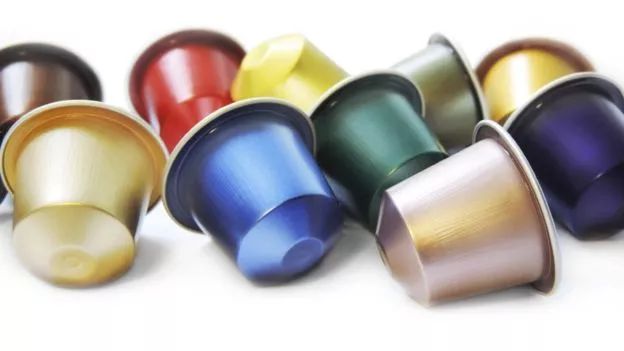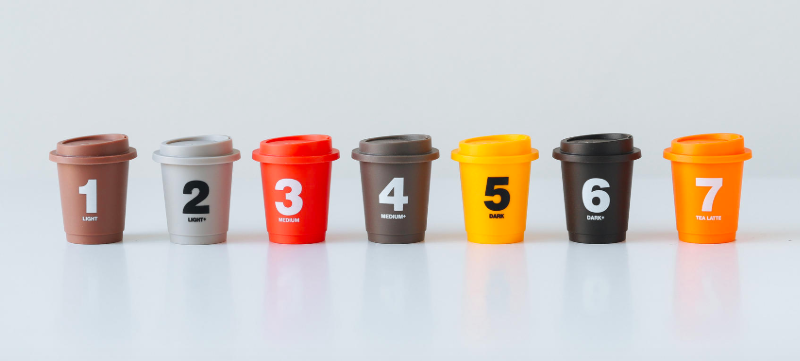The history of Nestl é and JDE introduces Nestl é and JDE launch coffee capsule recycling program!
According to foreign media reports, Nestl é and JDE announced the launch of their coffee capsule recycling program Podback on April 16.
Foreign media said: the local council in the UK will recall many brands of coffee capsules, including strong coffee, Duoquisi, Tassimo, Lakers 39th OR and Starbucks.
But this is not the first time Nestl é has launched a coffee capsule recycling program.

Nespresso, which has previously focused on capsule coffee makers, has also launched a capsule recycling program.
Nestl é first launched the capsule recycling program in 1991, as its coffee brand Nespresso Nongyu Coffee proposed and extended the plan to the Chinese market in 2015, consumers can take the used coffee capsules to offline boutiques for recycling, but since Nespresso boutiques are not available in all cities and consumers are unable to send capsule coffee back to Nespresso boutiques for recycling, July 2019 Nespresso has worked out a new plan for the capsule recycling plan, and Nespresso and JD.com Logistics have joined hands to launch coffee capsule online recycling services nationwide.
The purpose of introducing recycling capsules used by consumers is to achieve Nespresso sustainable development and environmental protection.
The information shows that:
Nestl é, founded in 1866, is the world's largest food manufacturer. In 1986, Nestl é launched four NESPRESSO coffee capsules Nes (Nestl é Nestle acronym) + presso (espresso espresso), which became popular all over the world. Nespresso, a subsidiary brand of Nestl é, is headquartered in Lobsang, Switzerland. Nespresso officially entered the Chinese market in 2007, and then the coffee capsule entered the US market in 2015, and not long ago. Nestl é also revealed plans to further expand its three Nespresso capsule production sites in Switzerland.
JDE Peet's first came into contact with coffee capsules in 2016, when JDE Peet's launched disposable coffee capsules, and the Andr é zieux factory, which plans to expand, was put into production at that time. It is worth noting that in October 2020, JDE Peet's announced a further expansion of the capsule coffee market, JDE Peet', the second largest coffee group in the world. S said in a statement that it will invest 110 million euros (now about 866 million yuan) to expand the global capsule coffee production line, and said that the new production line will be installed in phases over the next 18 months, of which the new production line in Andr é zieux, France, will be put into operation in the first half of 2021.

JDE is composed of DE MasterBlenders 1753, the coffee business of the former US food listed company Sara Lee, and the coffee business of Mondelez International. At the beginning of 2020, European packaged coffee giant JDE (Jacobs Douwe Egberts) merged with American coffee chain Peet's Coffee into JDE Peet's. On May 29th of the same year, JDE Peet's was listed in Amsterdam, the Netherlands and became the largest IPO in 2018.

JDE Peet's is listed on the Amsterdam Stock Exchange
At present, the main share of the global packaged coffee market is divided by Nestl é and JDE, among which, in the capsule coffee market, Nestle's Nespresso occupies a dominant position.
* Image source: Internet
Important Notice :
前街咖啡 FrontStreet Coffee has moved to new addredd:
FrontStreet Coffee Address: 315,Donghua East Road,GuangZhou
Tel:020 38364473
- Prev

What do time-honored brands like coffee in the cross-border coffee market? Three and a half Yongpu Coffee characteristics of Sumitagawa Coffee
With the development of coffee industry, a large number of consumer groups have been accumulated in a short period of more than 20 years. There is no doubt that coffee has become one of the fastest growing beverage categories in recent years. From the monopoly of Nestl é instant coffee in the first wave of coffee to the opening of the first Starbucks on Chengfu Street in Beijing in the second wave of coffee in 1997, to Chinese mainland around 2010.
- Next

Climate change affects the yield and quality of Ethiopia's Yega Xuefei boutique coffee beans
Professional coffee knowledge exchange more coffee bean information follow coffee workshop (Wechat official account cafe_style) A new study conducted by an international research group shows that climate change is affecting Ethiopia, Africa's largest coffee producer! In the future, the production of Ethiopia's boutique coffee beans will continue to decline, and the flavor will become more and more insipid. Carry out the research
Related
- The milk tea cup becomes smaller?! Overlord Tea Girl launches a new "Return to Yunnan" series
- Accused of selling counterfeit and high-priced coffee beans! Well-known boutique coffee brand "Oukelao" bowed and apologized!
- How to make espresso dumplings? Can I eat coffee and glutinous rice balls together?
- Save the unformed and stagnant powder cakes in one second! What is the problem with stagnant water in the powder bowl of the espresso machine?
- What does hand-brewed coffee stop mean? Why is it not recommended to make coffee by hand?
- Is it normal to smell like coffee? Why does coffee smell like alcohol? What's wrong with the strong smell of cold extract ice dripping ice brewed coffee?
- How to solve the problem that hand-brewed coffee extraction takes too long? Why is the water flowing so slowly when making coffee?
- The main points of making Australian white coffee, the proportion details, how does Australian white properly foam and blend the flowers?
- Can ice water make cold extract coffee? What is the difference between room temperature water and ice water for making cold coffee?
- What milk is best for making latte and white Dirty coffee? What is the difference between different brands of fresh milk and pure milk for making coffee?

